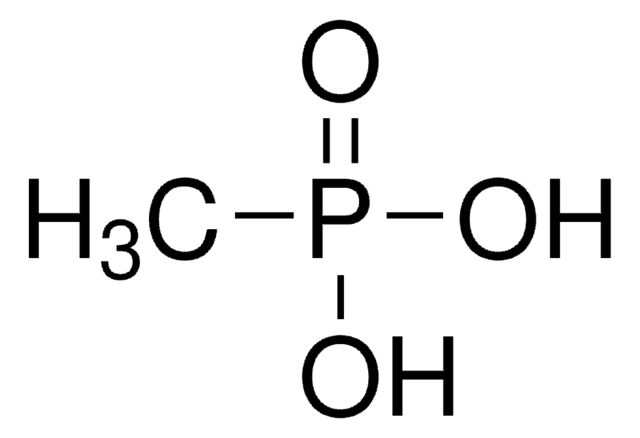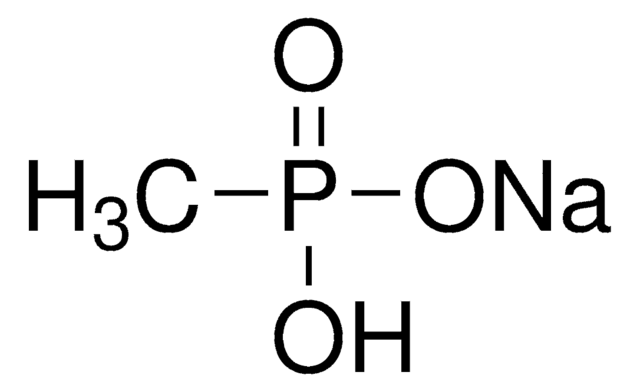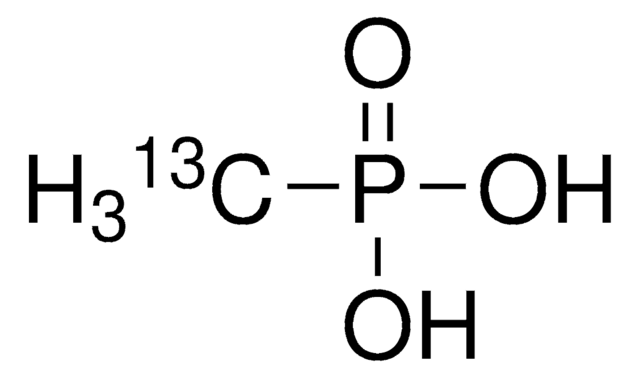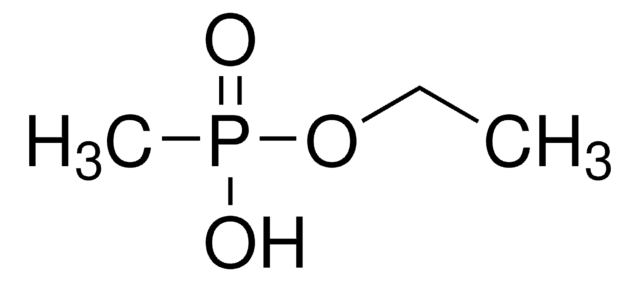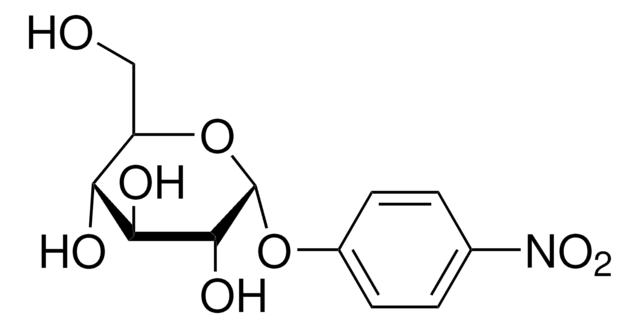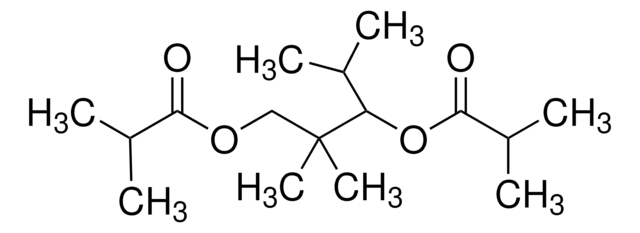40941
Methylphosphonic acid
99.0-101.0% (T)
Synonym(s):
MPA
About This Item
Recommended Products
Quality Level
Assay
99.0-101.0% (T)
loss
≤2.0% loss on drying
pH
0.9-1.4
mp
103-109 °C
105-107 °C (lit.)
solubility
H2O: 2.88 g in 30 mL, clear, colorless
cation traces
Al: ≤5 mg/kg
Ba: ≤5 mg/kg
Bi: ≤5 mg/kg
Ca: ≤10 mg/kg
Cd: ≤5 mg/kg
Co: ≤5 mg/kg
Cr: ≤5 mg/kg
Cu: ≤5 mg/kg
Fe: ≤5 mg/kg
K: ≤50 mg/kg
Li: ≤5 mg/kg
Mg: ≤5 mg/kg
Mn: ≤5 mg/kg
Mo: ≤5 mg/kg
Na: ≤50 mg/kg
Ni: ≤5 mg/kg
Pb: ≤5 mg/kg
Sr: ≤5 mg/kg
Zn: ≤5 mg/kg
UV absorption
λ: 260 nm Amax: ≤0.05
λ: 280 nm Amax: ≤0.04
SMILES string
CP(O)(O)=O
InChI
1S/CH5O3P/c1-5(2,3)4/h1H3,(H2,2,3,4)
InChI key
YACKEPLHDIMKIO-UHFFFAOYSA-N
Looking for similar products? Visit Product Comparison Guide
Related Categories
Application
Signal Word
Danger
Hazard Statements
Precautionary Statements
Hazard Classifications
Acute Tox. 4 Oral - Eye Dam. 1 - Skin Corr. 1B
Storage Class Code
8A - Combustible corrosive hazardous materials
WGK
WGK 2
Flash Point(F)
>392.0 °F - Pensky-Martens closed cup
Flash Point(C)
> 200 °C - Pensky-Martens closed cup
Choose from one of the most recent versions:
Certificates of Analysis (COA)
Don't see the Right Version?
If you require a particular version, you can look up a specific certificate by the Lot or Batch number.
Already Own This Product?
Find documentation for the products that you have recently purchased in the Document Library.
Customers Also Viewed
Our team of scientists has experience in all areas of research including Life Science, Material Science, Chemical Synthesis, Chromatography, Analytical and many others.
Contact Technical Service